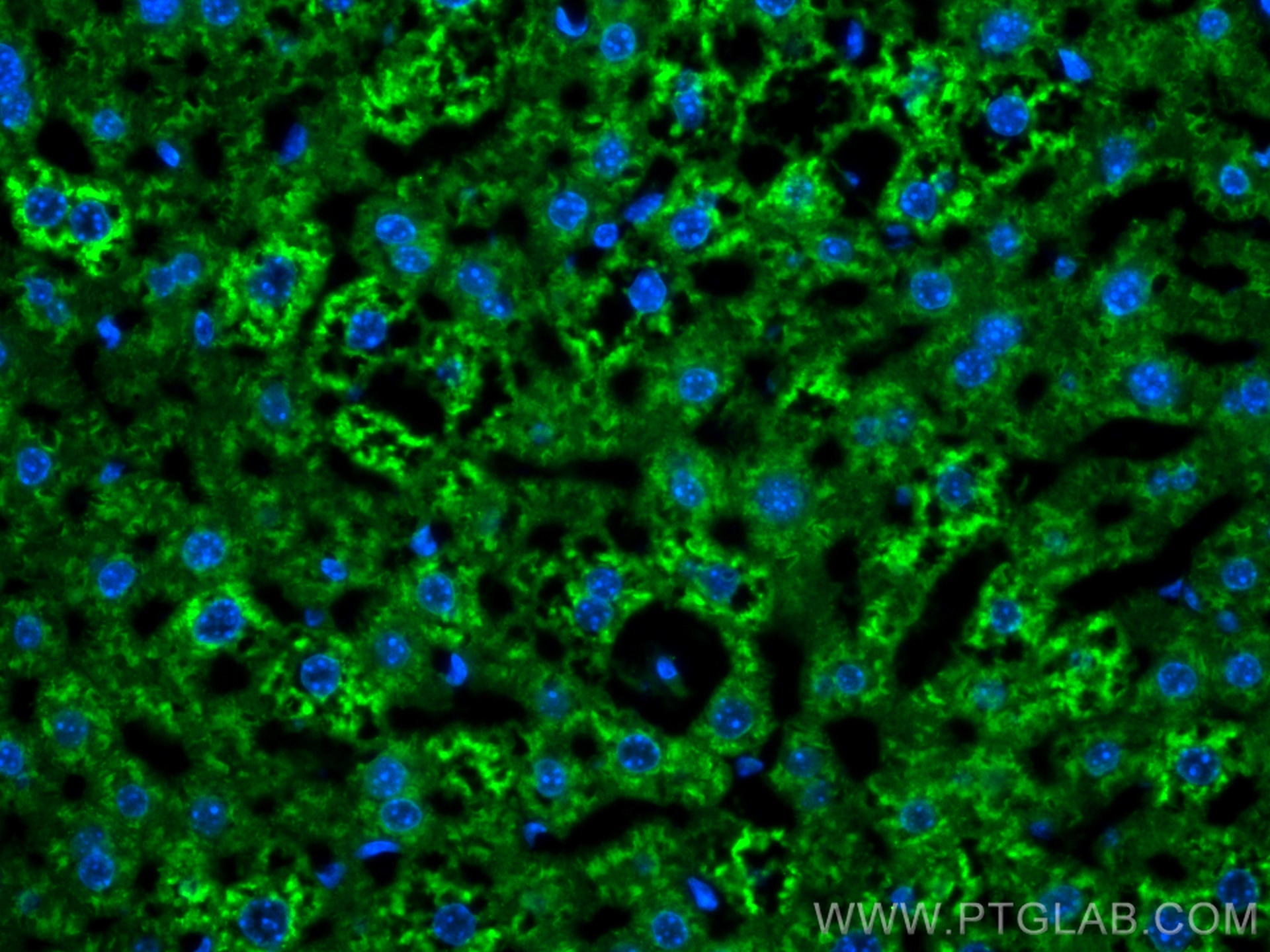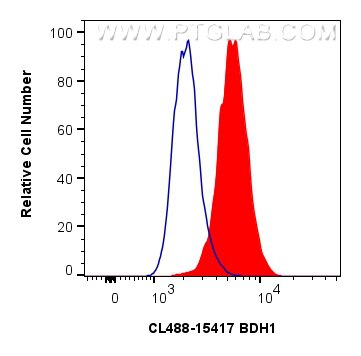Tested Applications
| Positive IF-P detected in | mouse liver tissue |
| Positive FC (Intra) detected in | HepG2 cells |
Recommended dilution
| Application | Dilution |
|---|---|
| Immunofluorescence (IF)-P | IF-P : 1:50-1:500 |
| Flow Cytometry (FC) (INTRA) | FC (INTRA) : 0.80 ug per 10^6 cells in a 100 µl suspension |
| It is recommended that this reagent should be titrated in each testing system to obtain optimal results. | |
| Sample-dependent, Check data in validation data gallery. | |
Product Information
CL488-15417 targets BDH1 in IF-P, FC (Intra) applications and shows reactivity with human, mouse, rat samples.
| Tested Reactivity | human, mouse, rat |
| Host / Isotype | Rabbit / IgG |
| Class | Polyclonal |
| Type | Antibody |
| Immunogen |
CatNo: Ag7705 Product name: Recombinant human BDH1 protein Source: e coli.-derived, PGEX-4T Tag: GST Domain: 1-343 aa of BC005844 Sequence: MLATRLSRPLSRLPGKTLSACDRENGARRPLLLGSTSFIPIGRRTYASAAEPVGSKAVLVTGCDSGFGFSLAKHLHSKGFLVFAGCLMKDKGHDGVKELDSLNSDRLRTVQLNVCSSEEVEKVVEIVRSSLKDPEKGMWGLVNNAGISTFGEVEFTSLETYKQVAEVNLWGTVRMTKSFLPLIRRAKGRVVNISSMLGRMANPARSPYCITKFGVEAFSDCLRYEMYPLGVKVSVVEPGNFIAATSLYSPESIQAIAKKMWEELPEVVRKDYGKKYFDEKIAKMETYCSSGSTDTSPVIDAVTHALTATTPYTRYHPMDYYWWLRMQIMTHLPGAISDMIYIR Predict reactive species |
| Full Name | 3-hydroxybutyrate dehydrogenase, type 1 |
| Calculated Molecular Weight | 38 kDa |
| Observed Molecular Weight | 31 kDa |
| GenBank Accession Number | BC005844 |
| Gene Symbol | BDH1 |
| Gene ID (NCBI) | 622 |
| RRID | AB_3672631 |
| Conjugate | CoraLite® Plus 488 Fluorescent Dye |
| Excitation/Emission Maxima Wavelengths | 493 nm / 522 nm |
| Form | Liquid |
| Purification Method | Antigen affinity purification |
| UNIPROT ID | Q02338 |
| Storage Buffer | PBS with 50% glycerol, 0.05% Proclin300, 0.5% BSA, pH 7.3. |
| Storage Conditions | Store at -20°C. Avoid exposure to light. Stable for one year after shipment. Aliquoting is unnecessary for -20oC storage. |
Background Information
BDH1 (3-hydroxybutyrate dehydrogenase, type 1) is a 343 amino acid protein that localizes to the mitochondrial matrix and belongs to the short-chain dehydrogenases/reductases (SDR) family. The deduced 343 amino acid protein contains a 46 residue leader peptide, which is cleaved to produce the mature form. It is a lipid-requiring mitochondrial enzyme with a specific requirement of phosphatidylcholine (PC).
Protocols
| Product Specific Protocols | |
|---|---|
| FC protocol for CL Plus 488 BDH1 antibody CL488-15417 | Download protocol |
| IF protocol for CL Plus 488 BDH1 antibody CL488-15417 | Download protocol |
| Standard Protocols | |
|---|---|
| Click here to view our Standard Protocols |






